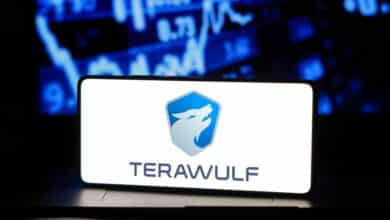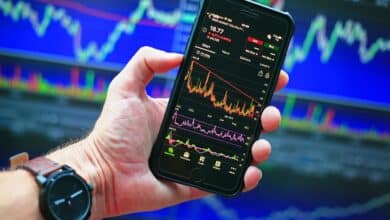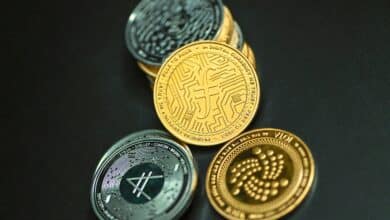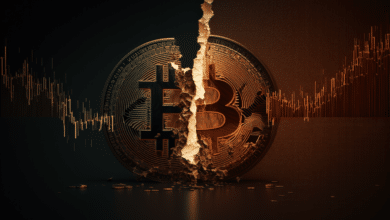What Are Blockchain Oracles And How Do They Work?
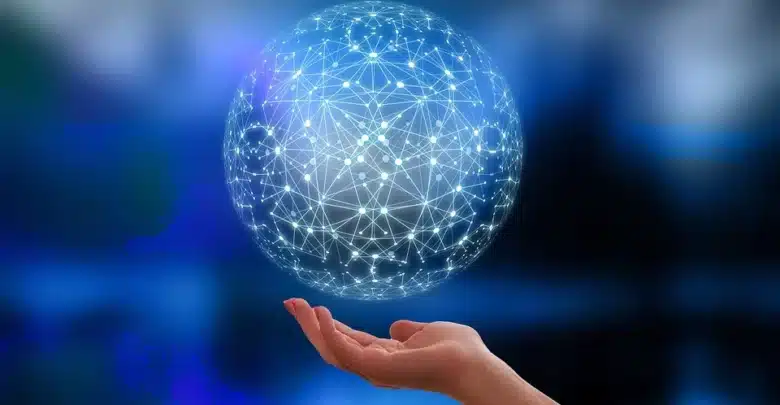
Introduction
Blockchains are a world in their own right. Cryptocurrency investors can store all the necessary data within a blockchain that is immutable and unchangeable. In other words, blockchain is a failsafe where all the transactions and related history are recorded. Since no outsider can invade the network, the blockchain can also not interact or connect with any data that is present outside of its internal environment. Therefore, developers have come up with an innovative method to solve this problem in the form of blockchain oracles.
What is a Blockchain?
Before delving into the definition and functions of a blockchain oracle, it is best to establish what a blockchain is first. A blockchain is a deterministic network made comprising computer programming that allows users to perform transactions or any other data transfers without the intervention of an active supervisor or manager. It means that a blockchain is an automated software that keeps operating following the given set of conditions and rules defined by developers.
Blockchains have become synonymous with the concept of DeFi or Decentralized Finance, which is a financial network that can operate without the presence of any centralized intermediary like banks, private financial enterprises, or any human operators.
What is a Blockchain Oracle?
The word oracle is derived from the Latin term orare. In ancient Greece, the religious temples appointed priests and priestesses that served as messengers between God and mortals. The concept has been adopted by Blockchain developers in the sense that blockchain oracles are the type of computer programs that allow the ecosystem to communicate and connect with the data from any external source.
Blockchains depend on smart contracts that are programming allowing blockchains to keep functioning following a predetermined path. Blockchain oracles play the role of bridges between smart contracts and other data sources to enable an exchange of alien data to the network.
Origin of Blockchain Oracles
There are no precise records of the first inventor of a blockchain oracle. However, programs like Augur are thought to be one of the earliest renditions. Augur is a decentralized prediction market that has been built on the Ethereum network. The software is under the ownership of the Forecast Foundation and was introduced in 2014.
The core developers behind Augur are Jack Peterson, Joey Krug, and Jeremy Gardner. The main function of Augur is to allow the investors on the blockchain to place bets and determine the winner using the data feed from outside sources. The product made its public debut in 2018 after a crowdfunding event in 2015.
How does a Blockchain Oracle Work?
Blockchain oracles are like an intermediary or parachain program that allows a blockchain to connect with the information present in the outside world. The nature of a blockchain does not allow it to make random decisions or actions. To ensure a consensus, a blockchain needs to follow a deterministic path. The deterministic philosophy dictates that every event that takes place must take place in the same manner against any odds. It also questions the authenticity of free will that grants a person or entity to operate independently and randomly.
A blockchain can’t grant some special favors to its favorite user or have any bias toward any other investor. Therefore, blockchains are set to perform in a defined and predictable manner with almost zero chance of random function. If a blockchain fails to stray from its deterministic path, it means that it is suffering from a technical error.
Since blockchains cannot exist without an explicit design, they can’t communicate with the outside world. Blockchains can only process data that is present within their ecosystem. Blockchain oracles works are an overpass for connecting smart contracts with external data sources and allow it to use the information for new functions.
Role of Blockchain Oracles in DeFi
The role of blockchain Oracles in DeFi is very important. A blockchain network can’t allow outside data flow without losing its decentralized status. Most federated computer programs that can freely interchange information with each other are connected with centralized channels. Take, for example, the international banking system. When an individual or commercial entity wishes to make a transaction with any other sovereign counterparts, they need to use centralized banking channels such as SWIFT.
A blockchain user can make transactions globally within one ecosystem. However, a blockchain does not allow its users to make transactions from one network to another. This is where the blockchain oracles come in. Blockchain oracles allow the one DeFi ecosystem to retain its decentralized status and enable the flow of information, transactions, and data from one blockchain to another or from outside sources to a blockchain network. With blockchain oracles, it becomes possible for a smart contract to gain access to the present information outside of its internal network and make accurate calculations for its users.
Example of a Blockchain Oracle
To simplify the concept of blockchain oracles, it is best to describe it using a hypothetical scenario. Take, for example, Ms. A and Ms. B, who are two users on Blockchain X. Both A and B place a $50 bet on horse racing results using the smart contract on Blockchain X. The smart contract will put the $50 bet amount from A and B into an escrow account under the pretext that the winners are entitled to $100. However, the smart contract can’t get the race scores.
The race is happening in a realm that exists outside of the Blockchain X universe. Therefore, Blockchain X needs to use a blockchain oracle program to receive the required information from a betting statistics website. With the help of the blockchain oracle, the smart contract on Blockchain X will be able to understand who the final winner is and transfer the $100 amount accordingly. It is worth noting that the smart contract on Blockchain X has been programmed to process the betting results in a deterministic manner by the developers for its conditioned performance.
Blockchain oracle is an innovative technique to expand the confined horizons of blockchain functionality without compromising its decentralized status. However, since blockchain itself is a nascent technology, there are still many issues with blockchain oracles as well. The oracle problem in blockchain is a theory that presents the users with the issues related to the verification of the information facilitated by a blockchain oracle. It means that the users or the blockchain are unable to verify whether the data provided by an oracle is accurate or not.
Renowned academic and blockchain expert Giulio Caldarelli mentioned the problem in detail in his book “Brief Introduction to the Blockchain Oracles and the Oracle Problem”. The issue has since been taken up within the blockchain development community, and there are also some attempts for its solution. One such solution is the creation of SuperOracles that is a decentralized oracle program that is based on a multi-chain network. The SuperOracle can import data from multiple sources and compute its accuracy through cross-examination.
Types of Blockchain Oracles
Software Oracle
Software oracles are the type of Blockchain oracle programs that connect the network with a data feed from other computer programs or blockchains. Software oracles can read data sources such as public or private servers, databases, websites, and statistic aggregators, among others. In some cases, software oracles work in tandem with hardware oracles.
Hardware Oracle
Hardware oracles are the type of data channel that hook up blockchains with data from the real world in real-time. Hardware oracles can convert data using sensors such as RFID, audio projectors, temperature gauges, barometers, wave recorders, visual activity detectors, and others. It means that blockchain smart contracts can directly collect the latest data projections from a live event with relative accuracy. There are also cases where software oracles are the main source of external data, and hardware oracles play the role of a relay.
Inbound Oracle
Information is a two-way process; it means that any digital device needs to receive and supply data to perform successfully. The Inbound oracles are the programs that are used to import data from an external source into the internal blockchain environment.
Typically, inbound oracles perform off-chain data or statistics feed changing in real-time. Smart contracts can perform set functions depending on the data variables from Inbound oracles, such as sending gifts or yield rewards concerning changes in market prices or economic conditions.
Outbound Oracle
Outbound Oracle is the opposite of Inbound oracles; they are used for sending the latest output from a blockchain to the outside source. Just like a CPU (Central Processing Unit) can create an output after computing the input data feed, in the same manner, smart contracts operate. The smart contracts take reference from the Inbound Oracle data and on-chain information and use it to create accurate and relevant computations. The outbound data is a product of the on-chain and Inbound oracle feed that is useful for the stakeholders like exchange markets, aggregators, analysts, financial experts, etc.
Consensus-based Oracle
The blockchain oracles that use the information from blockchain markets like Augur and Gnosis are called Consensus-based. These oracles follow the principles of the applicable consensus mechanism on a particular blockchain. They can also collect input from humans or prediction platforms. Since the prediction markets use a rating mechanism, they are risk-averse and reliable to come extent. It can also import projections from bots and other technical aggregators.
Decentralized Oracle
Decentralized oracles are the data channels for a blockchain that are not under the control of any centralized enterprise. It does not mean that these channels cannot collect information from a centralized source, but it means that they operate independently and does not possess any bias or rules that constrain the regulated data streams. Decentralized oracles try to make their data sources reliable by collecting references from multiple fonts and computing their mean.
Centralized Oracle
Centralized oracles are under the supervision of a government or private entity. It means that there are greater chances of data-related biases. At the same time, centralized oracles also provide the data from a unified source. The integration of the centralized oracles is determined by private ownership, and it does not take the community consensus into account while working on it.
Human Oracles
There are many cases where an individual has expertise or professional proficiency in a particular subject. The Human oracles allow bona fide experts to provide their input to a blockchain ecosystem as a guide rail for its smart contracts. There are also some cases where a human oracle performs the task of verifying the information that has been fed to a smart contract for veracity. On account of cryptographic verification, no unqualified person can impersonate an expert on human oracles.
Computation Oracles
Computation oracles are the type of data channel on the blockchain that is capable of delivering processed information that has been sourced from different origins. Computation oracles can feed manufactured and processed information to a blockchain project that has been collected from several outside sources. At the same time, there are also cases in which computation oracles operate as outbound channels.
Contract-specific Oracles
Contract-specific oracles are the type of blockchain sources that are specified to serve a singular smart contract at a time. In most cases, this type of blockchain oracle is considered an archaic option since it requires a considerable amount of time and effort to maintain it just for a single data course. Developers also have to spend a lot of time maintaining, verifying, and updating the contract-specific oracles. Therefore, they are used in rare and distinct instances.
Applications of Blockchain Oracles
Blockchain oracles can expand the blockchain ecosystems and make them universally operational. On account of its various vantage points, developers are spending more time updating and perfecting the technology. Here are some of the prominent and noteworthy applications of Blockchain oracles:
Blockchain oracles can allow smart contracts to read and comprehend functionality based on time and interval-based data. For instance, when smart contracts need to understand the passage of time for granting yield rewards or allowing a withdrawal option for the stake pledges.
Blockchain oracles can allow an otherwise secluded blockchain network to make decisions based on the latest changes in the capital markets, such as price fluctuations, trading volumes, tokenized asset bundles, etc.
BOs enable the blockchain network to gather all the unpredictable sets of information such as Weather changes and use it to issue projections related to the impact on asset sales or premium rates.
Blockchains can also collect usage data related to seismic activity and geological changes, which is crucial for smart contract deployment in the supply chain sector.
BOs can make DeFi Insurance a reality by quantifying the damage assessment reports based on the human report or digital sources and assessing the release of Insurance proceeds.
Blockchain oracles are playing an important role in creating sporting bets programs that are unbiased and free from human error. These oracles have also laid the foundation for fantasy sports contracts.
Blockchain oracles can grant prizes such as plane tickets using flight statistics and allow club members to qualify for the rewards automatically.
Limitations of Blockchain Oracles
Blockchain oracles can expand the applications and utility of blockchains to new horizons. However, there are still considerable risks involved with the core technology that every user must understand. Some of the most important risks involved with blockchain oracles are listed as under:
Transparency
Transparency is one of the biggest issues that are a major hindrance in the wider adoption of blockchain oracles. It means that in the case of decentralized or centralized oracles, the users are unable to examine the reason for the integration of a particular data source. The source is added by the blockchain developers, and they make the decisions without consultation with the relevant community and stakeholders.
Accuracy
Accuracy is also another massive problem with blockchain oracles that the developers have been trying to resolve. In most cases, the stakeholders can’t verify the accuracy of the data that has been fed to the network. The users, by design, have already committed to accepting the results of the BOs integrated smart contracts and cannot question the outcome regardless of its precision.
Security
The security of the lockchain oracle is always a huge concern for the developers and other stakeholders. Since most blockchain oracles are not encrypted entities, they are relatively easier to target by hackers and threat actors. Furthermore, the blockchain oracles are not based on federated servers, which means that any hacker can change the program once they can gain control and manipulate the data stream to serve their interest.
Fraud
Blockchain oracles also have to deal with the claims of fraud and manipulation. Since the private entities and a few blockchains, developers decide the source of information; therefore, there is a greater chance of foul play, and the stakeholders can’t see any data manipulations happening with smart contracts and blockchain oracles computations.
Processing Speed
Centralized Blockchain oracles are not only criticized for their massive lack of transparency but also their pain-stalking low processing speed. In some cases, the users have to wait for days or weeks at a time to get the output. There are irreplaceable components like human voting and real-time data collection that can slow down the process considerably.
Conclusion
Blockchain oracles are a work in progress, and they are still able to grant many benefits to the users at the same time. Despite their limitations, blockchain proponents can’t ignore the significance and utility of Blockchain oracles. In the future, Blockchain oracles can take center stage to pave the way for the widespread and universal implementation of Blockchain and DeFi applications.
Tokenhell produces content exposure for over 5,000 crypto companies and you can be one of them too! Contact at info@tokenhell.com if you have any questions. Cryptocurrencies are highly volatile, conduct your own research before making any investment decisions. Some of the posts on this website are guest posts or paid posts that are not written by Tokenhell authors (namely Crypto Cable , Sponsored Articles and Press Release content) and the views expressed in these types of posts do not reflect the views of this website. Tokenhell is not responsible for the content, accuracy, quality, advertising, products or any other content or banners (ad space) posted on the site. Read full terms and conditions / disclaimer.


